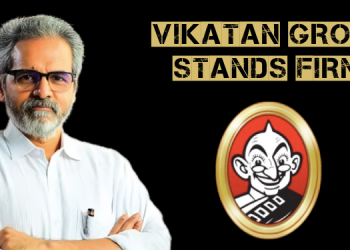Chennai: As the Indian media and entertainment industry stands at the brink of a transformative era, Kevin Vaz, Chairman, FICCI Media and Entertainment Committee and CEO – Entertainment, JioStar, shared his insights at the FICCI MEBC 2025 South Connect in Chennai. Addressing industry leaders, Vaz emphasized the growing influence of South Indian cinema and the evolving synergy between television and digital platforms.
South Indian Cinema: A Global Phenomenon
Reflecting on his journey with Star TV since 2016, Vaz likened his presence at the event to a homecoming. He acknowledged the significant milestones of Indian cinema, highlighting the contributions of legendary actors like Kamal Haasan. “From Moondram Pirai to Vikram, Kamal Haasan has continuously pushed boundaries, inspiring not just Indian cinema but the global film landscape,” he said.
Vaz noted the resurgence of the box office post-pandemic, citing blockbuster hits such as RRR, KGF 2, and Kantara, which have redefined the reach of regional cinema. The unprecedented success of Pushpa 2, where its Hindi version contributed 20% of the overall Hindi box office revenue, exemplifies the growing cross-border appeal of South Indian films.
He also pointed to critically acclaimed films like Mandela and Sarpatta Paramparai, which have elevated South Indian storytelling to new heights, resonating with audiences worldwide. The global recognition of Indian cinema was further solidified with RRR earning accolades at the 95th Academy Awards and Payal Kapadia’s All We Imagine as Light winning multiple international film festival awards.
The Role of Television in Media Expansion
While the digital revolution has reshaped content consumption, Vaz asserted that television remains a dominant force in India’s entertainment ecosystem. He credited TV channels like Star Gold, Colors Cineplex, and SET Max for broadening the reach of South Indian films across the nation. “These platforms have played a crucial role in turning regional superstars like Vijay and Allu Arjun into household names,” he remarked.
Despite the surge in digital content consumption, Indian television continues to thrive, particularly in the southern states, due to its affordability and accessibility. “Unlike Western trends, TV in India remains deeply entrenched in daily life. The collaboration between television and digital platforms is key to unlocking new creative and business opportunities,” Vaz added.
Balancing Creativity and Societal Sensitivities
As the media industry advances, Vaz stressed the importance of maintaining a balance between creative freedom and social responsibility. Content platforms, he suggested, must navigate these dynamics carefully to ensure they align with societal values while avoiding negative viewer experiences.
India’s Media Industry at a Turning Point
Looking ahead, Vaz sees the Indian media and entertainment sector at a critical juncture. He highlighted upcoming industry initiatives, particularly the WAVES Forum led by Sanjay Jaju under the guidance of India’s Honourable Prime Minister, as a step toward elevating Indian media on the global stage.
Closing his address, Vaz expressed optimism for the future, stating, “The next two days of discussions and innovations at FICCI MEBC 2025 will shape the trajectory of Indian media. I am excited to witness the evolution of our industry and the global impact we are set to create.”
As Indian cinema continues its upward trajectory, the confluence of television, digital platforms, and regional storytelling is set to redefine the country’s entertainment landscape, making it a formidable player on the world stage.

















